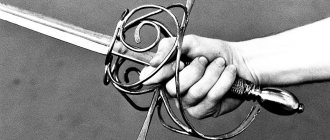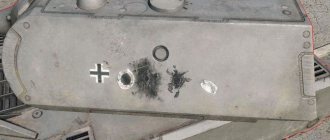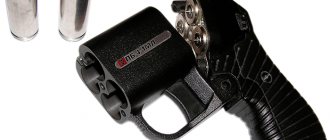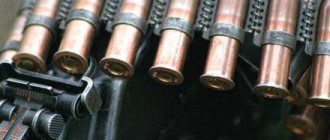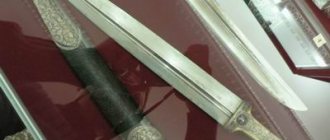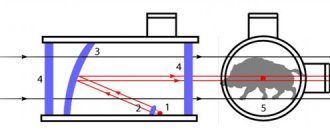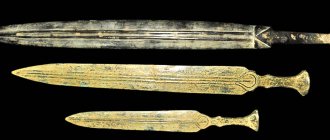The fencing tournament is rightfully considered the most beautiful sport, along with athletics competitions. Fights on foils or sabers are the highlight of any Olympics. The history of this sport dates back to the Middle Ages, when these two types of bladed weapons were assigned almost a decisive role on the battlefield. The combat rapier or sword, unlike swords and axes, has not lost its significance. The formidable edged weapon, which in the old days was carried only by officers and nobles, over time was transformed into a sports equipment.
Swords and rapiers
The rapier came to us from the Middle Ages, when instead of long swords, noble and rich warriors began to prefer narrow, long and light ones. Unlike swords, which often weighed up to 3 kg, the new weapon was designed for constant wear. Using a heavy sword as a weapon of self-defense was extremely inconvenient, so the European nobility and nobility of that time preferred to use light weapons with a long and narrow blade. The first swords and rapiers that appeared in service weighed no more than 1.5 kg. Along with the advent of a new type of bladed weapon, new technical methods of combat also appeared. Fencing with foils became a real art, which not everyone could master. Over time, the rapier becomes a mandatory attribute of an army and navy officer, an important element of equipment for civilian dress and men's suits.
Musketeer's sword
The rapier became not only a weapon used for military purposes, but also became firmly established in civilian use. The appearance of the blades reflected not only the perfection of weapons technology, but also fashion trends in the development of men's suits. Blades began to be decorated with various artistic forging elements, gold and silver script. The guard of the rapier began to take on the most intricate shapes, moving into the category of decorations. By the size and shape of the guard one could recognize the hand of a master.
History of the rapier
Spain is generally considered to be the birthplace of the rapier , or espada ropera (literally, "sword to be worn with clothing").
This term came into use at the end of the 15th century, and in the 16th and 17th centuries. In many European languages, the word rapier is firmly rooted, denoting a narrow, predominantly piercing weapon, equipped with a developed guard, for which a special fencing system was developed. The rapier became most widespread in the second half of the 16th - first half of the 17th centuries. Throughout this period, it was actively improved and changed as a result of fashion, as well as new requirements of the art of fencing. The shape of the rapier blade changed - from flattened and wide, adapted for both piercing and chopping blows, to having a diamond cross-section, which completely lacked a blade. The length of the rapier blade also changed - some individual specimens sometimes reached the size of a long sword from the Middle Ages. Especially long rapiers were common at the end of the 16th and beginning of the 17th centuries. After this period, the fencing system underwent changes, blades began to be shortened, and the rapier was replaced by a more elegant and deadly weapon - the sword of the 18th century.
Composition of the panel of judges
The judge conducting the fight must have a referee certificate for international or national competitions. The judge calls the participants, directs the fight, checks weapons, equipment and clothing, controls the secretaries, timekeepers and assistants. In case of violations, the judge imposes a punishment in accordance with the rules, maintains discipline and order. He also tests the alarm system, if necessary, and consults with technical specialists. The judge moves during the fight so that it is possible to monitor the progress of the fight and the operation of the injection fixation system.
Assistant referees, located on both sides of the field, assist the referee by monitoring the progress of the match and recording the hits with electrical equipment. Assistant judges change their places after each period of combat in individual duels or each fight in team competitions.
Judges are appointed by drawing lots. During the fight, changing the judge is not allowed. In exceptional cases, the decision on replacement is made by the referee delegates. For the draw before the final, the delegates of the International Fencing Federation (FIE) draw up a list of 4-8 judges. Half of the list consists of neutral (according to nationality criteria) specialists.
The structure of the rapier
Rapier Blade
Conventionally, the rapier blade can be divided into three parts:
- The strong part is the unsharpened area of the blade designed to repel enemy attacks; as a rule, this part of the blade was equipped with a fuller to lighten the overall weight and create additional stiffening ribs. The fuller usually had a length of no more than 1/3 of the total length of the blade;
- The weak part of the blade could either be sharpened or not, depending on whether the rapier was intended for delivering cutting blows or had a purely piercing function. In the weak part of the blade, as a rule, the center of the blow was located, located at a distance of 10 - 20 cm from the tip, depending on the length of the blade;
- The tip is the sharpened final part of the rapier blade (end). Almost along the entire length of the blade, from the fuller to the tip, there were stiffening ribs designed to enhance the piercing function of the rapier. Thus, the cross-section of the blade was a flattened or three-dimensional rhombus, depending on its functionality (piercing-cutting or piercing only).
Rapier hilt
The hilt of the rapier is its most beautiful and complex part. There is no point in describing it completely, but I would like to highlight three parts common to almost all of its types:
- Pommel (counterweight) - provided the necessary balance for the rapier. In a correctly balanced rapier, the balance point is located at a distance of 5 - 10 cm from the guard, and not at its base, as is sometimes mistakenly believed;
- Handle
- Guard - intended to protect the hand from blows. In terms of structure, it was the most complex part of the rapier, determining its type. There is practically no limit to the variety of guard rapiers, but it is still possible to distinguish three main types that were popular in a certain period.
Sword parameters
A sword is a heavy piercing weapon, similar in design to a rapier. However, the length of the product will be slightly longer, the weight is 770 g. The blade has a triangular cross-section and increased rigidity. The hand is protected from damage by a round guard, the diameter of which reaches 13.5 cm.
Sword fighting involves striking all parts of the opponent's body except the back of the head. In fencing there is no priority of actions. A blow delivered more than 0.25 seconds later than the previous one is not counted.
Injections made by opponents simultaneously are mutually recorded and awarded to both athletes.
Each sports model has a guard. This element is classified according to the degree of closure of the hand. There are several types:
- "Spanish" bowl. Deep version with a pair of rings inside. During the battle, the sword is held by them or by the hilt itself.
- Bilbo. The most secure model, unlike the previous version. It has an additional bow and a larger bowl.
- Papenheimer. It is a developed guard with a cup and hand protection. It looks like a complex interweaving of arches.
- Flemish guard. It is made in the form of a crosshair with rings or shields, and does not have a bow.
- Cavalry. It is complemented by arches that cover the hand.
After the military sword passed into the rank of court decoration and ceremonial weapon, the hilts began to be decorated with precious stones; their weaving was a real work of art. Along with this, the crosshair has almost completely disappeared. In sports, the tip of the sword is equipped with a special sensor that responds to pressure over 550 grams.
Types of rapiers
The variety of rapier hilts for the period of the 16th-17th centuries. there was practically no limit, everything was determined by the desire of the customer and the traditional tastes that existed in the area where the rapier was made, in connection with this, some types of rapiers were named after the area where they were most popular. Usually all rapiers are divided into three groups according to the shape of the hilt:
Rapier with ring guard
Rapiers with ring guards (arrow-shaped hilt) are the most popular and earliest in appearance, existing throughout the era of rapiers of the 16th-17th centuries.
Pappenheimer type rapier
Rapiers with Pappenheimer-type hilts appeared in the first half of the 17th century. A significant difference from the idle ring guard is the presence of protective cups that protect the hand from a penetrating injection.
Rapier with cup guard
The rapier with a cup-shaped guard is the latest form of development of this weapon (not counting the transitional types from the rapier to the sword). A similar system became widespread in Spain in the mid-17th century.
Historical saber
Epee, rapier, saber, the differences of which were formed due to historical combat techniques, are still applicable today in sports competitions, taking into account their ancient features.
A saber is a cutting weapon that has a curved blade. In order to deliver stabbing blows, the warriors sharpened the top of the blade by 10 cm on both sides.
The saber appeared in the East and became widespread in the 7th-8th centuries. During this period it was a cutting-and-piercing type of weapon. By the 14th century it was already predominantly a chopping variety, having a relatively low weight and significant curvature of the blade. The displacement of the center of gravity from the hilt increased the force of the blow and the area of damage.
In the 16th century, sabers were used by dragoons, and in the 18th-19th centuries, a modified type of this weapon was used by hussars.
Rapier Blade
A rapier blade, as a rule, is almost impossible to date (unless there is a gunsmith's mark). The fact is that the fashion for blades of various shapes changed quickly and regularly. Sometimes they updated the old blade, changing its profile, or attached a fashionable, for that period, hilt to it - on some samples of rapiers there are obvious traces of such alterations.
Rapier mid-16th century
Throughout the 16th century, rapier blades became longer and narrower, gradually losing their cutting properties, and if in the middle of the 16th century, the length of a rapier blade averaged 90 - 95 cm, and the width was 3 cm, then by the beginning of the 17th century century, the length of the blades increased to 110 - 115 cm, and the width decreased to 2 - 2.5 cm. Such weapons were intended exclusively for delivering injections.
Rapier, early 17th century
Most rapier blades, especially those made in the first half of the 17th century, are very simple, with a smooth surface. Sometimes on the outside of the blade there was the name of the master, written in small letters or embossed in the form of a mark. There were also dates for the manufacture of blades. Those blades that were decorated usually had a scroll pattern, plot scenes and mottos made using the technique of etching or engraving with the addition of gilding. The steel was often blued, and on some examples that have survived to this day there are barely noticeable traces of this coating.
Dueling rapier 17th century
After the 1640s, there was a tendency to shorten blades. In some cases, they were not changed to shorter ones, but simply reforged accordingly. Around this time, rapiers designed exclusively for duels appeared - they still had a very long and narrow blade and a simple guard, consisting of a front protective shield in the form of a wide saucer and a crosspiece equipped with finger rings.
Battlefield requirements
The fencing field measures 150-200 cm wide and 1400 cm long. It should be smooth, horizontal, well lit.
There should be 5 clear lines across the length of the field: central middle; two transverse lines “start of battle” (at a distance of 2 m on each side); two lines “back border” (at a distance of 7 m on each side). The extreme 2 m in front of the “rear boundary” line must be marked in a different color for ease of orientation for fencers.
Fencing with foil
As the rapier and its faithful companion, the dagger, became increasingly popular among European society in the 16th century, a “fashion” for private duels began to emerge in Europe. In this regard, there was a need to create a certain system of fencing with this weapon, which was significantly different from fencing with a sword.
In the 16th century, the Italians were considered great masters of rapier fencing; all young people from noble houses in Europe learned this art from them. Italian teachers were invited to serve at royal courts.
From this time on, treatises on weapon ownership began to be actively written and published. One of the first fundamental textbooks was a book published in 1536 with a long title - “The New Work of Achillo Marrozo of Balogna, Master of Martial Arts,” where he outlined new concepts of fencing, which became a reliable foundation for the further development of this art.
Fencing with rapier and dagger
In 1567, Charles IX founded the Military Academy in Paris, within the walls of which the French fencing school was subsequently born, which became the most popular in all of Europe in the second half of the 17th century.
In the history of the rapier, like many other types of European bladed weapons, the 17th century was a turning point. By the 1630s, fencing with rapier and dagger began to go out of fashion, and from the second half of the 17th century the light sword came into use, which quickly gained universal popularity, and by the end of the century completely replaced the rapier, both from civilian use and in the army. . The only exception is Spain, where the rapier with a cup-shaped guard remained popular even at the beginning of the 18th century.
Consumer Reviews
Those who use razors from the famous Rapier brand appreciate the strengths of these blades:
- The shaving process is comfortable. Due to the high quality of the blades, the glide on the skin is smooth. However, in some cases, this can lead to skin injury: some users put excessive pressure on the blade.
- The use of Rapier products does not irritate the skin.
- The products are not in short supply and are sold in many stores.
Rapier in questions and answers
John Clement on the rapier
Rapier in questions and answers, this is a very informative article by the American fencer, director of the Association for the Revival of Martial Arts, John Clements, dedicated to this type of weapon. I would like to note that the text of the article is full of various judgments and conclusions that are quite at odds with other authors, so I would recommend treating many of its points with caution.
If you liked the article, then share it with like-minded people
Comments ()
How to choose a weapon
Having decided to take up fencing, you should determine which weapon is more acceptable for a person. This can be a saber, epee and rapier. The difference between combat techniques using each type is studied by a beginner during the first 3-4 months.
Every coach is sure that the type of fencing he teaches is the best, most technical and beautiful. Therefore, the chosen type of weapon must be loved. Every fencing master will teach this to a beginner from the very first lessons.
Not everyone will be able to try themselves in sparring or a training fight right away. Therefore, you should try various fencing techniques and only after a few months make a conclusion about the most suitable type of weapon for yourself.
It should also be noted that training swords, rapiers and sabers are somewhat different from electronic ones. Although, if you master fencing techniques and learn all the tactical and physical subtleties of this sport, such details will not interfere with your ability to prove yourself in competition.
The weapons saber, epee and rapier, the differences of which were formed under the influence of historical factors of combat, allow every novice fencer to choose the best type for himself. So, we can conclude: each type of weapon has its own unique capabilities and entertainment value.
